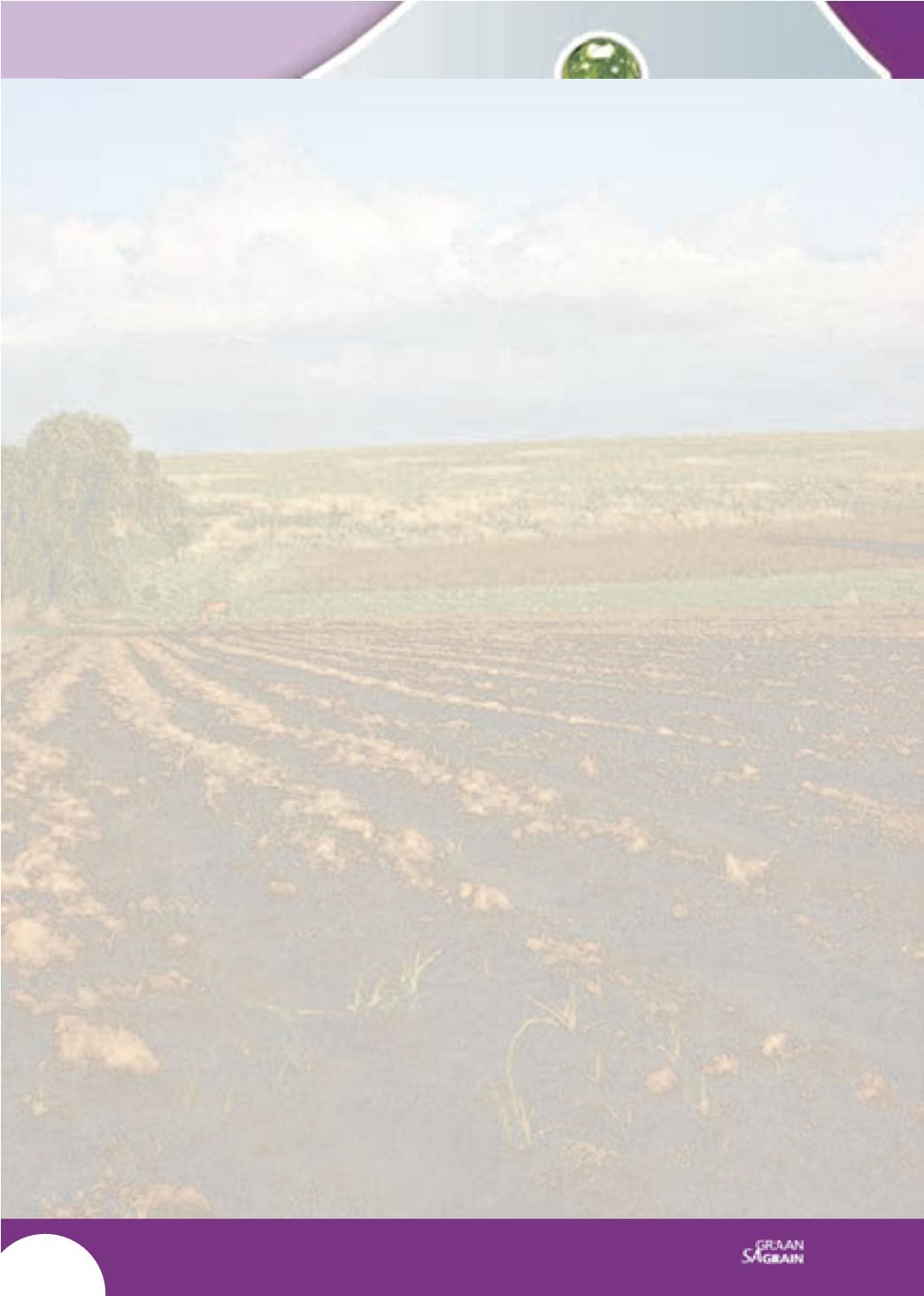

52
GRAANGIDS
2016
GRAIN GUIDE
Conservation agriculture essential
for sustainable crop production
Grain SA wants to take the lead in promoting more sustainable crop production. The organisation
believes that conservation agriculture as a sustainable crop production system that can prevent the
systematic deterioration of soil quality is the way to go about it.
However, conservation agriculture also has various other benefits, with the most important prob-
ably being cheaper and more profitable crop production. In order to exploit all the benefits of
conservation agriculture, a producer must apply the following three principles simultaneously and
with quality: minimum soil disturbance, permanent organic ground cover, and crop diversification.
A new programme was developed in 2013 that Grain SA would like to use to achieve this vision.
Grain SA, with the financial support of the Maize and Winter Cereal Trusts, aims to create an
environment with this programme that will makes it easy, convenient and attractive for a producer
to switch to conservation agriculture. Grain SA’s Conservation Agriculture Farmer Innovation
Programme strives to support innovative ideas and projects that fit in with this philosophy
and principles.
The first objective is to develop a sound knowledge of and relationship with key role-players,
particularly producers, in conservation agriculture. For this reason Grain SA has established a
conservation agriculture working group that consists mainly of conservation agriculture producers
representing all grain production regions. The group has identified specific responsibilities for the
working group, among which the prioritisation of study areas and themes to be investigated is the
most important. At a higher level there is good cooperation with government departments
and other stakeholders to address national issues, such as the development of a policy for
conservation agriculture and the integration of conservation agriculture with the national Land-
Care programme.
Over the past two years a number of strategic objectives have been implemented, and have
already had a large impact on the promotion of conservation agriculture. The first of these was to
obtain a good description of and publication on successful conservation agriculture practices in
different regions, providing very valuable guidelines for existing and prospective conservation
agriculture producers. The raising of general awareness through farmers days and congresses
was further seen as a priority, and several successful events took place. The most important of
these was probably the Ottosdal Conservation Agriculture Congress that was held in March 2014
and March 2015, and that has become an important event for the dryer western areas.
However, the most important objective of the new programme is to conduct on-farm research in
which producers participate actively, which is an excellent tool to cultivate awareness, knowledge
and skills in conservation agriculture among producers and other role-players. A few projects
of this nature are already in full swing, for example in collaboration with the Ottosdal No-Till
Club (among commercial farmers), and with the active small-farmer groups in the Bergville and
Matatiele districts in KwaZulu-Natal and the Eastern Cape respectively. Thus far it has been an
extremely successful strategy to approach these projects in collaboration with active and well-or-
ganised farmer groups. The aim is to identify more such groups (and projects) to promote and ac-
celerate the entire process associated with conservation agriculture. For this reason a new project
was launched in the North-East Free State in collaboration with the Riemland (Reitz) and Ascent
(Vrede) study groups to promote conservation agriculture in the region. A variety of farm trials
were implemented from October 2015 in collaboration with the ARC, VKB and other role-players
to reinforce and disseminate the knowledge on conservation agriculture in the region.
Dr Hendrik Smith, conservation agriculture facilitator: Grain SA

















